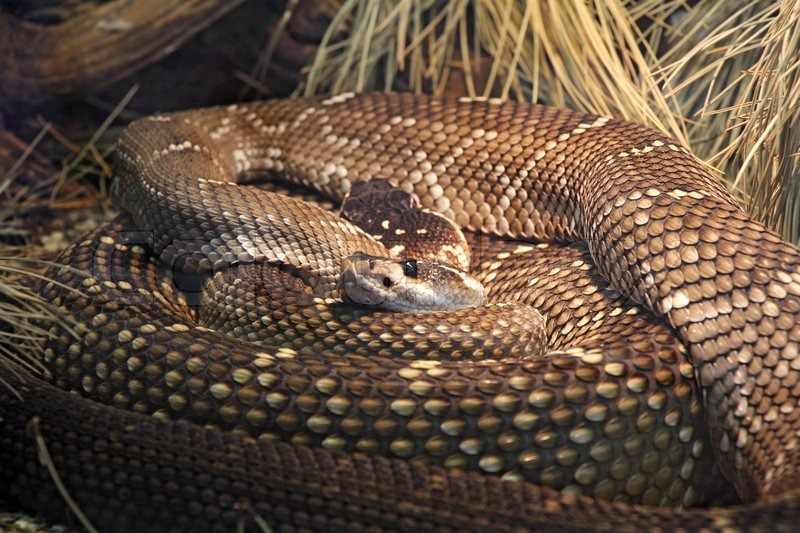ANIMAL: Mexican Black-Tailed Rattlesnake Crotalus nigrescens Type of Animal: Viper Habitat: Grassland, desert, rocky areas, mountainous areas, woodland, high-altitude forest, riparian corridors in rugged terrain, semi-desert, semidesert/desert grassland, plains, desert scrub, oak/pine-oak forest, spruce-fir forest, mixed conifer forest, foothills, upper bajadas, rocky slopes, oak savanna, dunes, boreal forest, rocky stream beds, canyons, valleys Location(s): Mexico in S Sonora, SW Chihuahua, S Coahuila, S to Oaxaca, Veracruz, & Tlaxcala Appearance: Noticeable black tail, dark band between eyes, diagonal dark stripe from eye to corner of mouth, females have larger/thicker tails, reddish-brown, darker vertical crossbands Food/Diet: Rodents, rabbits, weasels, birds, lizards, other snakes, amphibians, insects Status in Wild: Stable Conservation: Breeding from zoos & private breeders Lifestyle: Solitary Additional Info: Called: Male Female Young-Snakelet Group-Solitary Weight: Male-1.5 lbs Female-2 lbs Gestation: 5-7 months Life Span: 15-20 years Body Length: Male-2.5 ft Female-3.5 ft Tail Length: Male-0.5 ft Female-0.7 ft Main predators are hawks, eagles, owls, falcons, coyotes, bobcats, larger snakes, & foxes. Each time snake sheds skin, new segment added to rattle. Nocturnal in summer & diurnal in spring & fall. Hibernates in winter, sometimes w/ other snake species. Like many rattlesnakes, venom is hemotoxic, destroying red blood cells, disrupting blood clotting, and/or causing organ degeneration/generalized tissue damage. Breeding occurs in spring. Females give birth to 3-12 live young. Sexually mature at 4 years old. Uses Jacobson’s organs in mouth to detect chemicals/scents/tastes. Leather used for bags, belts, wallets, footwear, purses, & jackets. In the past, the oil/fat was used to reduce swelling, aches, & pains. Like most rattlers, they’re ambush predators. Fun Fact(s): Their venom has been used in scientific research to produce antivenin. Even though highly venomous, they’re highly docile. They play important role in keeping rodent populations in check. Like many rattlers, they’re killed out of fear.
